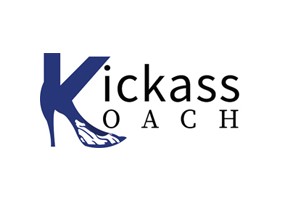Listen to Other Episodes of the Kickass Koach –
ImpactBank’s – the Kickass Koach is on i-Tunes AND you can always find the most recent episodes on ImpactBank’s main website page with a link to iTunes to make it easier for you to subscribe. Of course the podcast link on the website navigation bar also takes you to all episodes.
ImpactBank’s The Kickass Koach podcast supports senior leaders who want to quickly master the art and practice of leadership while stepping into a new assignment. When you were promoted into a senior position, if you’re like most people, you were immediately excited b y the opportunity to really make a difference. You also soon realized the immense, even daunting, challenge ahead of you.
y the opportunity to really make a difference. You also soon realized the immense, even daunting, challenge ahead of you.
You quickly had feelings of being lost, overwhelmed and very alone. It is completely understandable – you need to find your leadership rhythm. We help you find your leadership presence – one that will both command a room and warm hearts so people want to follow you and exceed your expectations – then you will know what it feels like to really make an impact.
ImpactBank’s “ON YOUR MARK…” 3-6 month program focuses exclusively on the first 90-180 days in a new assignment to give you a positive, productive and purposeful start. ImpactBank’s “THE IMPACT BUMP” 18 month program is for leaders who want to take the ‘kick-start’ they got to a whole new level. We exclusively work with senior leaders in their first two years in role so we bring resources designed specifically to support your thinking and development.
This Week’s Additional Recommendations:
Episode 38: The opening episode for this series where I discuss why this information is so important for the senior leader. Episode 39 explores Confirmation Bias. Episode 40 digs into Anchoring Bias. Episode 41 examines the illusion of control.
Episode: 25: From the Kickass Koach archives- The final episode in the series on Leadership and the Brain. How our collective brain reacts to observing OR experiencing unfairness. It’s a timely examination where I look at how the Blue Jays turned things around against Texas in last fall’s ALDS.
Active Series- BIAS
By now you see I change up my definition for BIAS. It’s my way of not getting too comfortable or stuck in the definition – one of my tricks to keep noticing when they inflict themselves on me. It seems to work for me WHEN I remember to do it – that’s the problem with that lazy brain that likes to stay in a rut.
I invite you to look for tricks to catch your biases when they strike.
If you have a reflective system – meditation, yoga, daily walks, journaling, or such – make it a part of your practice.
Definition of BIAS – this week’s iteration
Biases are unconscious drivers that influence how we see and react to the world.
THEY ARE the invisible air we walk through – exerting their influence outside of conscious awareness,
THEY ARE adaptive mechanisms evolved to help us make quick, efficient judgments and decisions with minimal cognitive effort.
AND AS A RESULT, biases can impact every decision we make.
In the comment section share a variation of the definition that you think may offer a fun twist.
WHY SHOULD YOU CARE?
Do you want to make a difference? If leadership is your CALLING – you feel COMPELLED to have an impact. You ARE a difference-maker.
Most of my clients are in the non-profit sector so having an impact is what gives you purpose. You care about it more than making money – hence you are willing to give your heart and soul to a purpose.
At ImpactBank, we want to co-create a difference so you can BE the difference-maker – have an impact.
I have spent the vast majority of my career in service to or as a senior leader AND impacting the growth and development of others has always been a passion. I made a conscious decision to return to a “source of joy” that I felt when supporting senior leaders AND I decided to focus my attention in the non-profit sector – healthcare, education, human services and so on because leaders who practice their craft in this sector live for purpose first and it inspires me.
As a senior leader in the non-profit sector you are driven by purpose and you have a mandate to make a difference.
You made a choice to serve in the non-profit sector and with that comes a responsibility. You would never intentionally allow your office/workplace to get mired in destructive politics or the ugly hubris of ego, or the toxic energies of a selfish leader to the extent it was negatively impacting the community you serve.
negatively impacting the community you serve.
As the senior leader you are charged with specific deliverables and hopefully a clear mandate. Your biases and those held by members of your team will likely derail your efforts if you are not vigilant. It’s not easy and it is essential you show yourself and your team some compassion when BIASES raise their ugly head AND you will make a major and positive impact when you start to develop strategies to take away the power the biases have. It is a clear path once you see it – never an easy one.
This Week’s BIAS
The Straw-man Fallacy: a common form of argument (BTW it’s considered an informal fallacy) based on giving the impression of refuting an opponent’s perspective or idea, while actually refuting something completely different from what the speaker was actually saying.
The so-called typical straw-man approach creates the illusion of having completely defeated an opponent’s proposition by covertly replacing it with a different proposition (a straw man) and then to defeat THAT false argument instead of the original proposition. THEN HELL YEAH…I win! AND, you are left perplexed.
This bias is often deployed unintentionally which makes it even harder to detect immediately. It is just as commonly used by a senior leader to silence dissent as it is used to shut down an idea or proposal forwarded by the senior leader. Either way it is NOT productive and shuts people down readily.
It is NEVER easy to accept dissenting views and yet as senior leaders our willingness to full hear the dissenters can be our best hope of making good decisions.
A few questions to ask yourself:
- For this bias I have two different scenarios I want you to think about. First, the one where you take a risk and ask a provocative question only to have the leader ridicule what you said by exaggerating the underlying concept behind the question. Secondly, think of a time you were leading a meeting and you felt sabotaged by a “naysayer” and in your annoyance you dismiss the point they are making by taking the underlying conclusion to the extreme to shut them up.
 What real conversations from different perspectives are shut down prematurely in your meetings? What if, rather than shutting down dissent you fully examined the ‘other’ perspective?
What real conversations from different perspectives are shut down prematurely in your meetings? What if, rather than shutting down dissent you fully examined the ‘other’ perspective?- How can you become more attuned to when a straw-man is materializing? What can you do differently when you notice it appearing before you?
- What if you increased the level of curiosity in each meeting and reduced the need for people to justify their perspectives?
- What could you do to welcome the extreme perspectives and to trust yourself to know how to manage them effectively so you and your team could sharpen your edges on them and realize the boundaries of your abilities rather than staying in the safe places that hold us small and limit our minds?
“Our current problems will not be solved at the level of thinking with which they were created.” A. Einstein
This Week’s Story
I had some fun in the 90’s as a senior leader; I remember a meeting with a team of my peers in 1998 during which I was excited to share a new idea I had been exploring to invest specifically in a unique program at a local university geared exclusively for women. I hadn’t expected much push-back since we all wanted to develop our leadership bench-strength in preparation for the anticipated growth and expansion.
To my surprise I received strange stares and then a few of the guys got really angry. I remember one of them throwing up his hands and saying something like, “Ya, see there she goes, she wants to toss out all the capable men and build up an army of women. You can count on Rox to turn this whole place up side down.” Another actually stood up and walked around the table toward me before saying something like, “Rox, it’s reverse sexism…. you can’t possibly think we should give preferential treatment to the women who want to become managers? That is blantantly unfair and you should be ashamed of yourself.” It was crazy for a few minutes and I will admit the first time it came up I backed down far too easily. I asked myself many times why I did. I think it was words like “unfair” and “reverse sexism” and maybe “army of women”. My goal was to create fairness and I was working hard to build a meaningful succession plan. I was left feeling like I had been totally off based. BUT I WAS NOT.
I NEVER ALLOWED THIS TO HAPPEN WITH THAT GROUP AGAIN THOUGH…when I realized what had happened and I understood my reaction I could prepare for these arguments appropriately.
That’s the problem with the entrance of a strawman, we rarely notice it in the moment. That is likely part of what make it so effective in derailing a discussion It puts people on the defensive, giving the perpetrator the upper hand but ultimately not helping the relationship and definitely NOT moving the agenda along productively.
Interestingly the more I became aware of when someone replaced my perspective with that of a straw-man, I also had to confront when I did it to others. It can be VERY EFFECTIVE if all you want to do is WIN the argument BUT it is never appropriate for a leader to bring this tactic to bear … it shuts people down and you and your agency/organization will ultimately lose.
So if you didn’t listen to the podcast you are likely curious how I rectified the situation! Well a few weeks later I had an opportunity to put it back on the agenda. Because their reaction the last time had worked so well the same dudes decided to raise it again. I was ready…I waited for Randy (not his real name) to finish. It didn’t take as long this time BECAUSE I just looked at him and nodded while he spoke and then I responded something like, “You are right Randy….Because it is part of my mandate to build bench strength in our management team I have decided to use this opportunity to build a group of women who can kick your but and you figured me out, I plan to replace every last one of you. So it seems to make sense that we immediately kick out all the men who are currently in the program we have going…since they don’t fit my plans…” DEEP SIGH. I know I used a bit too much sarcasm but my point was made and the straw-man had no power in the room any more; he was gone. This created space for me to re-position my recommendation to a room of people who were more inclined to listen. Ultimately I secured the funding for my department to move forward making an investment in this uniquely women-centric development plan for leadership.
This Week’s EXTRA BIAS
Self-serving bias –Believing that one’s own successes are due to internal, personal factors but one’s own failures are due to external circumstances. For example, “I achieved this highly desirable goal because of my tenacity and leadership prowess; We failed to remain productive because the team let me down by not wanting it badly enough.”
Recently we hear lots of talk about the U.S. primaries and Donald Trump is a really great case study in self-serving bias. He goes so far as to completely deny his failures – they are clearly not attributable to him personally WHILE any success he has had is directly attributable to his “greatness” It seems to me that anyone who must continue to tell others how great they are is stuck firmly in this bias.
I remember when struggling in a senior position – I knew I needed to see things differently if I were going to bring about the changes I needed. I wondered whether I had a blind spot. I sought out input from a former colleague who had become a close friend. As I told my story and shared my doubts I remember how she kept affirming me for my abilities and at one point expressed concern about my self-doubt and even told me I was listening to my “inner critic”.
In my gut I knew this wasn’t an indulgent kind of self doubt that the “inner critic” feeds up – I knew I was looking for healthy self awareness. This friend, with the best of intentions was feeding my self-serving bias and I am thankful I was able to ultimately see it.
When do you allow your self-serving bias to be nurtured so you miss opportunities to bring down blind spots and develop greater self awareness and understanding?
As a LEADER, I have learned, sometimes the hard way, how important it is to seek out the support of a thinking partner. It isn’t easy, most people want to feed the self-serving bias AND it feels great. What doesn’t feel great is when you learn it was an illusion and it is something you could have avoided HAD YOU SIMPLY challenged your own thinking.
A Few Things You Can Do
A few ideas on what you as a leader can do to mitigate the potential impact of the Straw-man Fallacy AND the Self-Serving Bias.
- Awareness is the key. Being present and in the moment will help with this. You have to be totally focused in conversations to really notice when the straw-man being utilized. It may help for you to start by looking for 2 or 3 examples of when you may have either had your on perspective turned into a straw-man or when you may have done it to others. Chances are you will find at least one in the past 7 days if you have been in any challenging meetings.
- Develop a planned response. As a leader I am not suggesting you use the approach I shared in my story directly BECAUSE mine worked with peers; it could be destructive to relationships when you are the most senior person in the room. Modify it – soften it BUT you have to call it out and refocus the energy in the room or the straw-man will sabotage your meeting.
- BE ho
 nest and open when you find yourself using a straw-man to silence an argument. It will be tough to own up to it but it will be instructive and healing for a team. In my observation leaders feel more comfortable being in control and portrayed as “right” and yet when you are willing to be vulnerable and reveal your desire for self-awareness, your influence increases significantly. Try it, you will be pleasantly surprised.
nest and open when you find yourself using a straw-man to silence an argument. It will be tough to own up to it but it will be instructive and healing for a team. In my observation leaders feel more comfortable being in control and portrayed as “right” and yet when you are willing to be vulnerable and reveal your desire for self-awareness, your influence increases significantly. Try it, you will be pleasantly surprised. - Don’t forget the reason a straw-man is created. It is a way to simplify a complex issue or conversation making it easier to polarize people. When you can neutralize the straw-man you will support a richer more meaningful conversation and encourage more diverse points of view to emerge AND that is where all the really great ideas will be found.
- A point on the self serving bias. When leaders allow themselves to get comfortable in this bias hubris is likely to lead them into less than productive places. The best way to counter this bias is to ensure you have people around you who will encourage you to question your motives, thinking, limiting beliefs and blind spots. When you are self-critical and you are told to be kinder to yourself, it may be good advice AND it may be feeding your self serving bias so be discerning.
We both know that as a leader you feel pressure to make quick decisions that please everyone and ensure adherence to all regulatory and legislative requirements. ONLY when you recognize the impact bias is having on your ability to deliver on what is expected of you, will you be able to mitigate the potential damage by establishing checks and balances. Taking a bit more time may annoy people – even create some problems for you in the short term AND consulting and reflecting just a bit more before decisions will actually get you where you want to go more quickly.
more time may annoy people – even create some problems for you in the short term AND consulting and reflecting just a bit more before decisions will actually get you where you want to go more quickly.
When you choose a leadership perspective EVERYTHING will change.
Don’t let bias cloud your judgment.
NEXT TIME: Are you making bad decisions about money and what if it hurts your agency or organization, how much are your biases costing you?…Don’t miss it.
ImpactBank Diversity Program: The Diversity Dividend
Would you or your organization benefit?
We tailor the program to the organization’s and leader’s specific needs and current challenges.
Are there conflicts that persist between stakeholder groups or within specific work groups?
Do you routinely experience poor compliance rates? (In other words, are there requirements that workers just fail to meet on a regular basis? Do you have poor attendance or high attrition rates? Are there constantly mistakes made in working with stakeholders? Are acceptable levels of service only met by some members of the team or not consistently across the team?)
Do you find yourself frustrated because you have to say the same things over and over and you can’t get people to take critical requirements seriously?
Are there conflicts bubbling beneath the surface? Are you and your team tripping over biases and failing to achieve the required outcomes?


I see your website needs some unique & fresh articles.
Writing manually is time consuming, but there is solution for
this hard task. Just search for – Miftolo’s tools rewriter
You are right. I got lazy and limited my writing to LinkedIn posts – I have decided to get back to expanding my efforts and ensuring I post in both spots. Thanks for spurring me on.